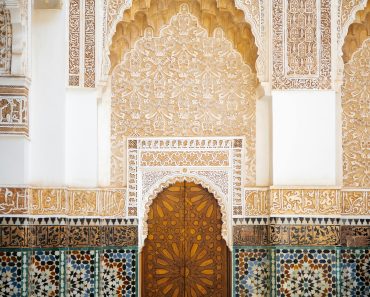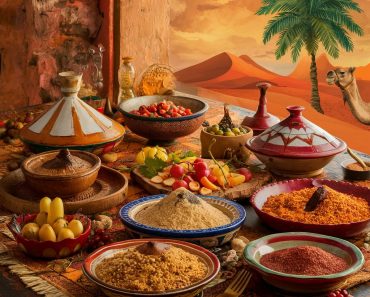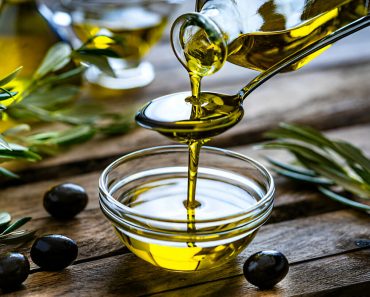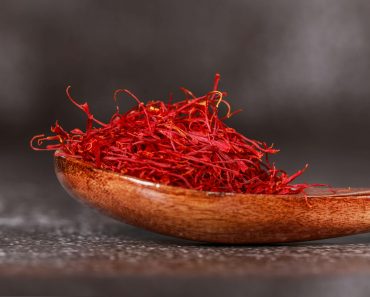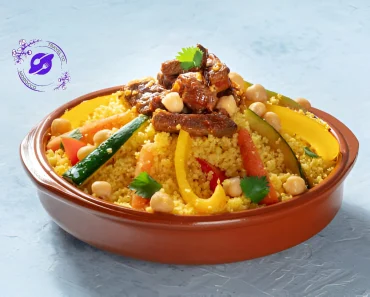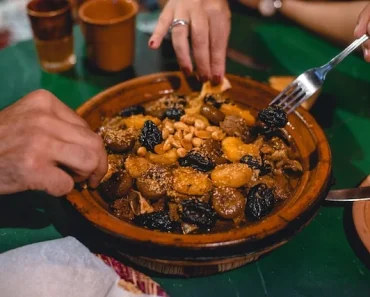The Exquisite Tradition of Moroccan Tea: A Deep Dive into its Rich History, Unique Characteristics, and Art of Preparation
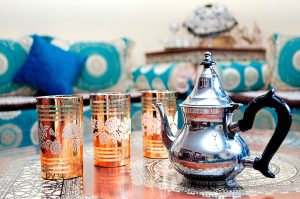
Moroccan tea
Moroccan tea, a cherished symbol of hospitality and tradition, embodies centuries of cultural significance within the North African kingdom. This aromatic beverage, also known as Maghrebi mint tea or Moroccan mint tea, has transcended its origins to become a global symbol of Moroccan culture. In this exploration, we delve into the historical roots, distinctive characteristics, key ingredients, and the artful process of preparing this revered brew.
Origins and Historical Significance
The history of Moroccan tea dates back to the 12th century when tea was first introduced to Morocco by traders from the Far East, particularly China. Over time, tea became integrated into Moroccan society, evolving into a cornerstone of hospitality and social interaction. The tradition of serving tea to guests is deeply ingrained in Moroccan culture, reflecting the country’s warm and welcoming ethos.
Place in Moroccan Culture
Moroccan tea holds a central place in various social settings, from everyday gatherings to formal ceremonies. It is commonly served during family gatherings, business meetings, and religious celebrations, symbolizing hospitality, friendship, and respect. In Moroccan households, the preparation and serving of tea are often accompanied by intricate rituals, showcasing the artistry and attention to detail associated with this beverage.
Unique Characteristics
One of the distinctive features of Moroccan tea is its vibrant flavor profile, characterized by a harmonious blend of green tea, fresh mint, and sugar. The combination of these ingredients creates a refreshing and invigorating drink that is enjoyed throughout the day, especially during the hot summer months. The addition of mint lends a cooling sensation to the tea, making it a popular choice for quenching thirst and rejuvenating the senses.
Key Ingredients
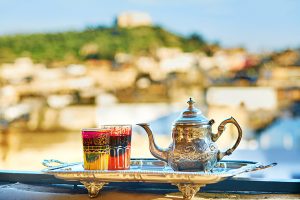
Moroccan tea
The key ingredients used in Moroccan tea include:
- Green Tea: Traditionally, Chinese gunpowder green tea is used in Moroccan tea preparations. This type of tea is known for its rolled leaf pellets, which unfurl during brewing, releasing a rich flavor and aroma.
- Fresh Mint: Mint, particularly spearmint, is an essential component of Moroccan tea. The fresh leaves impart a bright, aromatic quality to the tea, complementing the earthy notes of the green tea.
- Sugar: Moroccan tea is typically sweetened to balance the astringency of the green tea and the herbal freshness of the mint. White sugar or sugar cubes are commonly used, added according to personal preference.
The Art of Preparation
Preparing Moroccan tea is not just about combining ingredients; it is a meticulous process that requires skill and patience. Here is a step-by-step guide to crafting the perfect cup of Moroccan tea:
- Boil Water: Start by bringing water to a vigorous boil in a tea kettle or pot.
- Rinse the Tea: Place a small amount of green tea leaves in a teapot and add a splash of hot water. Swirl the water around to rinse the tea leaves briefly, then discard the water. This step helps remove any impurities and enhances the flavor of the tea.
- Add Mint and Sugar: To the rinsed tea leaves in the teapot, add a generous handful of fresh mint leaves and the desired amount of sugar.
- Pour Boiling Water: Fill the teapot with the remaining boiling water, covering the tea leaves, mint, and sugar completely.
- Steep and Serve: Allow the tea to steep for approximately 3 to 5 minutes, depending on your desired strength. Moroccan tea is typically served strong but can be adjusted to suit individual preferences. Pour the tea into small glasses from a height to create a frothy layer on top, a technique known as “pouring to create foam.”
- Enjoy: Moroccan tea is best enjoyed hot, sipped slowly to savor the blend of flavors and aromas. It is often accompanied by traditional Moroccan pastries or snacks, enhancing the overall tea-drinking experience.
Characteristics That Define Moroccan Tea
What sets Moroccan tea apart from other brews? It’s a symphony of flavors and aromas that dance on the palate:
- The Tea Base: Moroccan tea typically features Chinese gunpowder green tea, known for its tightly rolled leaves that unfurl gracefully during brewing, releasing a robust flavor with hints of smokiness.
- The Fresh Mint: The addition of fresh mint leaves, often spearmint, lends a bright, herbaceous note to the tea. The mint’s refreshing qualities make Moroccan tea a go-to choice, especially during the scorching summers of North Africa.
- Sweetness Factor: Moroccan tea is sweetened, usually with copious amounts of sugar. The sweetness not only balances the tea’s natural astringency but also adds a delightful caramelized undertone to each sip.
- The Pouring Ritual: Part of the allure of Moroccan tea lies in the ritualistic pouring process. Tea is poured from a height, allowing the liquid to aerate and create a frothy foam on top. This technique not only enhances the visual appeal but also contributes to the overall sensory experience.
Essential Ingredients and Preparation
To brew Moroccan tea authentically, you’ll need:
- Chinese gunpowder green tea
- Fresh mint leaves (preferably spearmint)
- Sugar
- Water
Step-by-Step Brewing Guide:
- Boil the Water: Start by bringing water to a rolling boil in a teapot or kettle.
- Rinse the Tea: Place a small amount of green tea leaves in the teapot and add a splash of hot water. Swirl the water gently and then discard it. This rinse helps awaken the flavors of the tea leaves.
- Add Mint and Sugar: To the rinsed tea leaves, add a handful of fresh mint leaves and the desired amount of sugar. The sweetness level can vary based on personal preference, but Moroccan tea is often on the sweeter side.
- Pour Boiling Water: Fill the teapot with the remaining boiling water, covering the tea leaves, mint, and sugar completely.
- Steep and Infuse: Let the tea steep for about 3 to 5 minutes, allowing the flavors to meld together. The longer the steeping time, the stronger the tea’s flavor profile.
- The Pouring Ceremony: When it’s time to serve, hold the teapot high above small glasses and pour the tea in a steady stream. The height of the pour creates a frothy foam, adding to the tea’s visual appeal.
- Savor and Enjoy: Moroccan tea is best enjoyed hot, sipped slowly to appreciate its layers of flavor. Pair it with traditional Moroccan pastries or nuts for a complete sensory experience.
Conclusion
Moroccan tea stands as a testament to the rich tapestry of Moroccan culture, blending history, hospitality, and culinary artistry into a single, exquisite beverage. Its journey from ancient trade routes to modern-day rituals exemplifies the enduring allure of traditions that transcend borders and time. Whether shared among friends, family, or strangers, Moroccan tea continues to foster connections and create moments of joy and camaraderie, making it a cherished symbol of Moroccan identity and heritage.
